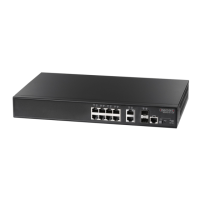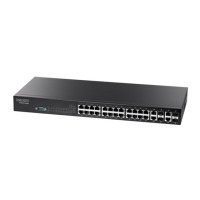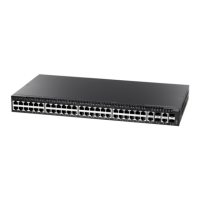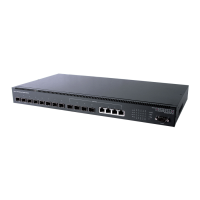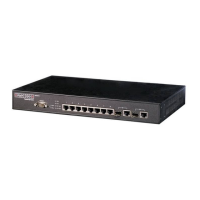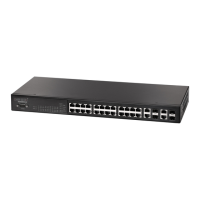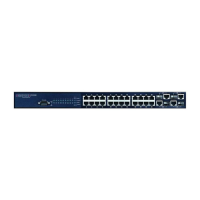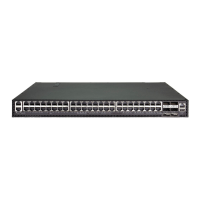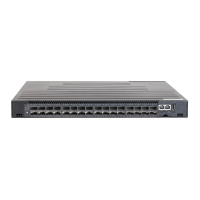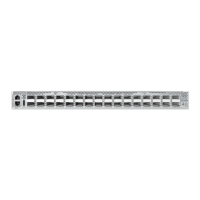C
HAPTER
25
| SNMP Commands
– 639 –
snmp-server user This command adds a user to an SNMP group, restricting the user to a
specific SNMP Read, Write, or Notify View. Use the no form to remove a
user from an SNMP group.
SYNTAX
snmp-server user username groupname [remote ip-address]
{v1 | v2c | v3 [encrypted] [auth {md5 | sha} auth-password
[priv des56 priv-password]]
no snmp-server user username {v1 | v2c | v3 | remote}
username - Name of user connecting to the SNMP agent.
(Range: 1-32 characters)
groupname - Name of an SNMP group to which the user is assigned.
(Range: 1-32 characters)
remote - Specifies an SNMP engine on a remote device.
ip-address - The Internet address of the remote device.
v1 | v2c | v3 - Use SNMP version 1, 2c or 3.
encrypted - Accepts the password as encrypted input.
auth - Uses SNMPv3 with authentication.
md5 | sha - Uses MD5 or SHA authentication.
auth-password - Authentication password. Enter as plain text if the
encrypted option is not used. Otherwise, enter an encrypted
password. (A minimum of eight characters is required.)
priv des56 - Uses SNMPv3 with privacy with DES56 encryption.
priv-password - Privacy password. Enter as plain text if the
encrypted option is not used. Otherwise, enter an encrypted
password.
DEFAULT SETTING
None
COMMAND MODE
Global Configuration
COMMAND USAGE
◆ Local users (i.e., the command does not specify a remote engine
identifier) must be configured to authorize management access for
SNMPv3 clients, or to identify the source of SNMPv3 trap messages
sent from the local switch.
◆ Remote users (i.e., the command specifies a remote engine identifier)
must be configured to identify the source of SNMPv3 inform messages
sent from the local switch.
◆ The SNMP engine ID is used to compute the authentication/privacy
digests from the password. You should therefore configure the engine
ID with the snmp-server engine-id command before using this
configuration command.
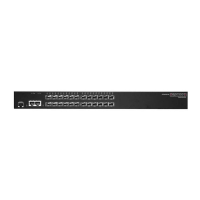
